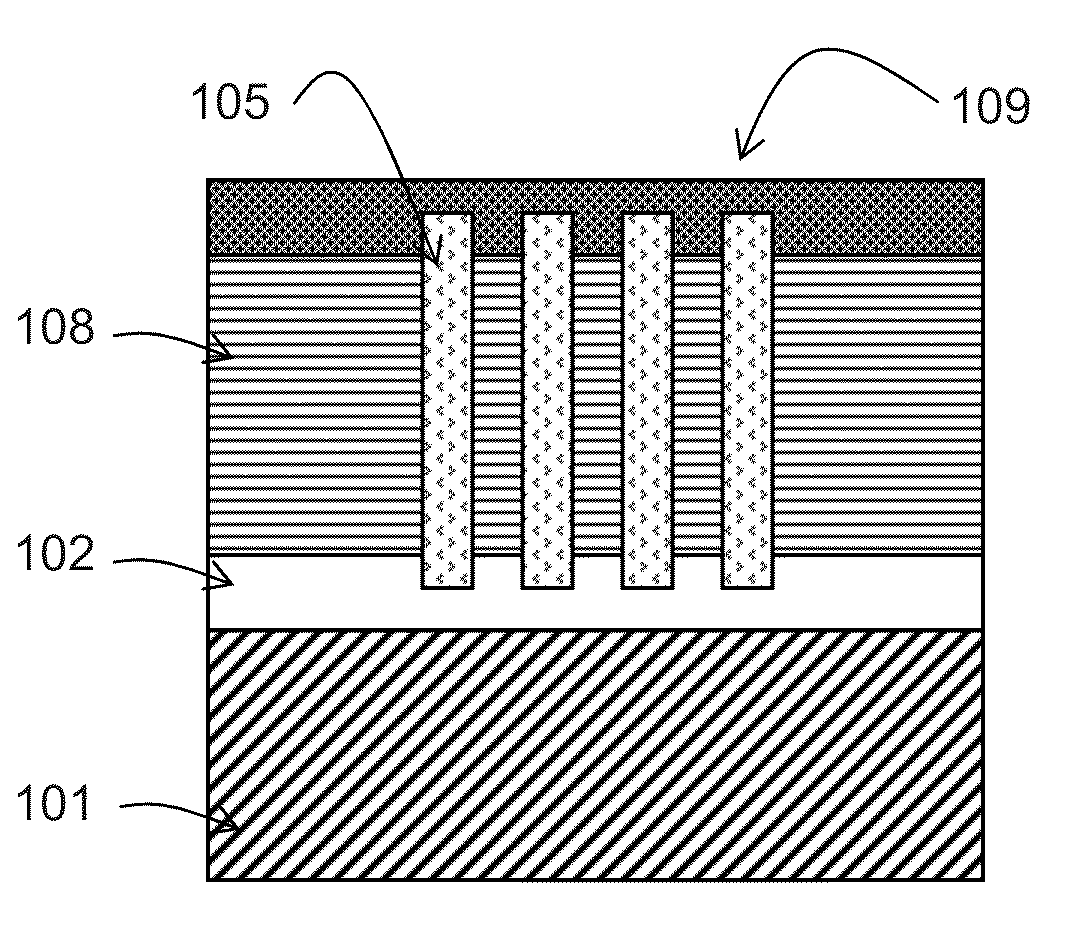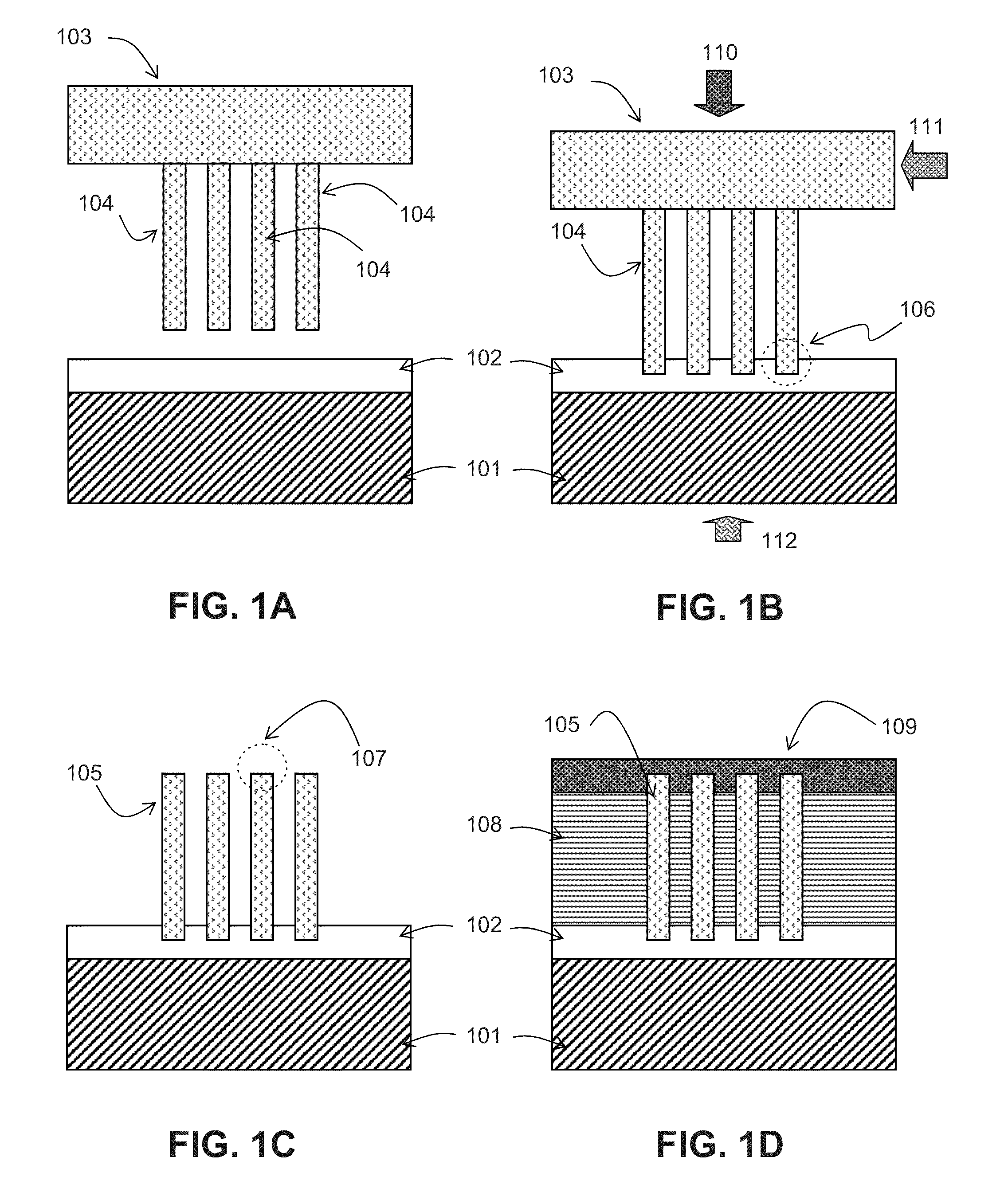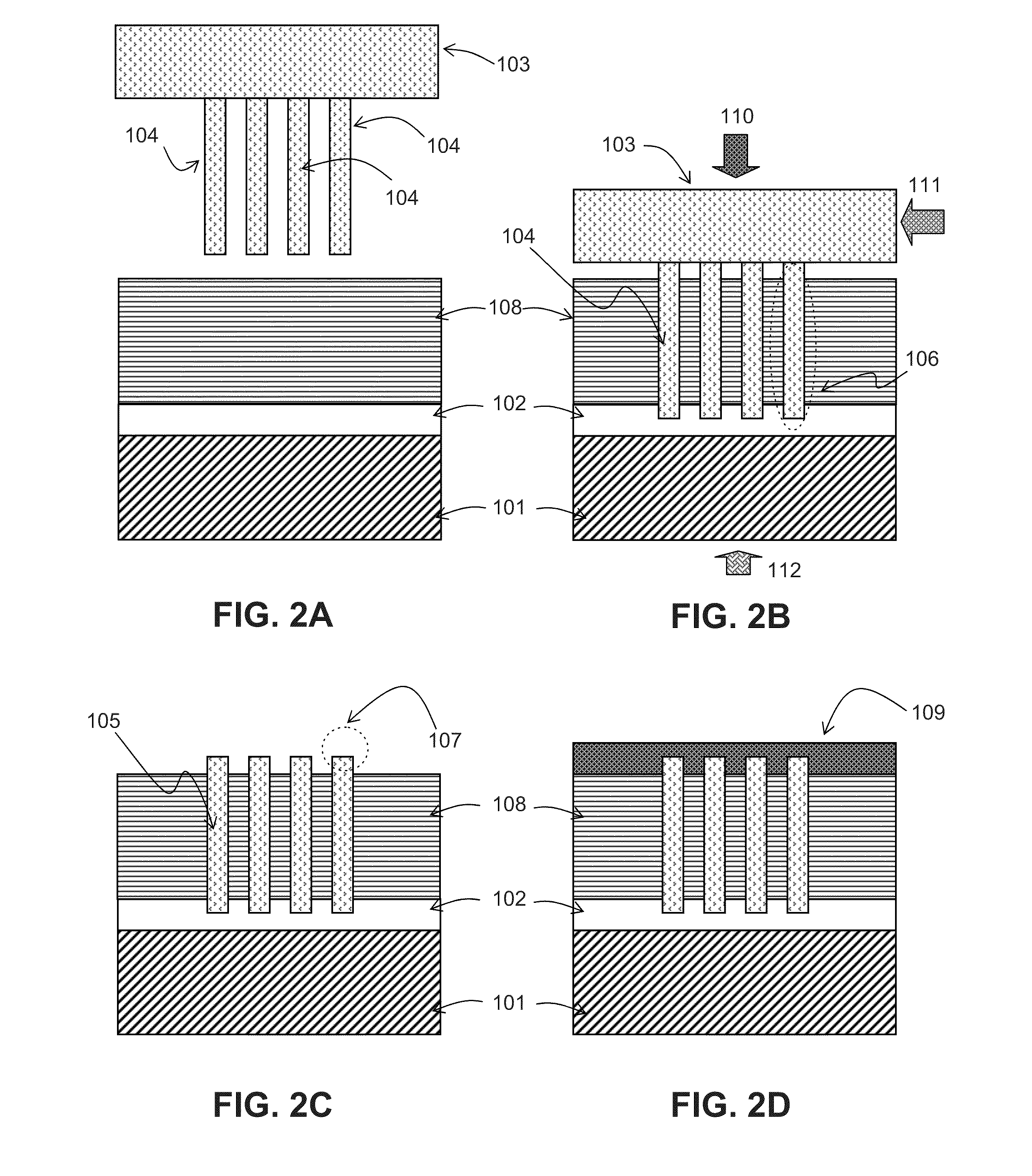Method and apparatus for fabricating optoelectromechanical devices by structural transfer using re-usable substrate
a technology of optoelectromechanical devices and re-usable substrates, applied in the direction of electrical apparatus, semiconductor devices, nanotechnology, etc., can solve the problems of unpredictable performance degradation, substantial cost, and limited technology of each fabrication technique of combining two or more different materials on a single substrate, and achieve the effect of low cos
- Summary
- Abstract
- Description
- Claims
- Application Information
AI Technical Summary
Benefits of technology
Problems solved by technology
Method used
Image
Examples
Embodiment Construction
[0137]The following description is presented to enable any person skilled in the art to make and use the embodiments, and is provided in the context of a particular application and its requirements. Various modifications to the disclosed embodiments will be readily apparent to those skilled in the art, and the general principles defined herein may be applied to other embodiments and applications without departing from the spirit and scope of the present disclosure. Thus, the present invention is not limited to the embodiments shown, but is to be accorded the widest scope consistent with the principles and features disclosed herein.
[0138]In the following discussion, note that like reference numerals refer to corresponding parts throughout the drawings. Furthermore, the same drawing numeral labeling appearing in more than one drawing refers to the same element. In addition, hereinafter, the following definitions apply:
[0139]“Mother substrate” refers to an original substrate or templat...
PUM
 Login to View More
Login to View More Abstract
Description
Claims
Application Information
 Login to View More
Login to View More - R&D
- Intellectual Property
- Life Sciences
- Materials
- Tech Scout
- Unparalleled Data Quality
- Higher Quality Content
- 60% Fewer Hallucinations
Browse by: Latest US Patents, China's latest patents, Technical Efficacy Thesaurus, Application Domain, Technology Topic, Popular Technical Reports.
© 2025 PatSnap. All rights reserved.Legal|Privacy policy|Modern Slavery Act Transparency Statement|Sitemap|About US| Contact US: help@patsnap.com



